Data shows that the digital health market is expected to surpass USD 200 billion by 2020. Digital devices, and the data and insights they provide are changing the way the healthcare industry operates. So how are companies like Roche Diagnostics laying the groundwork for success? Moska Najib reports for Diagram magazine on a panel discussion in Kuala Lumpur, Malaysia that brought together experts from across the Asia Pacific (APAC) region to explore the future of digital healthcare.
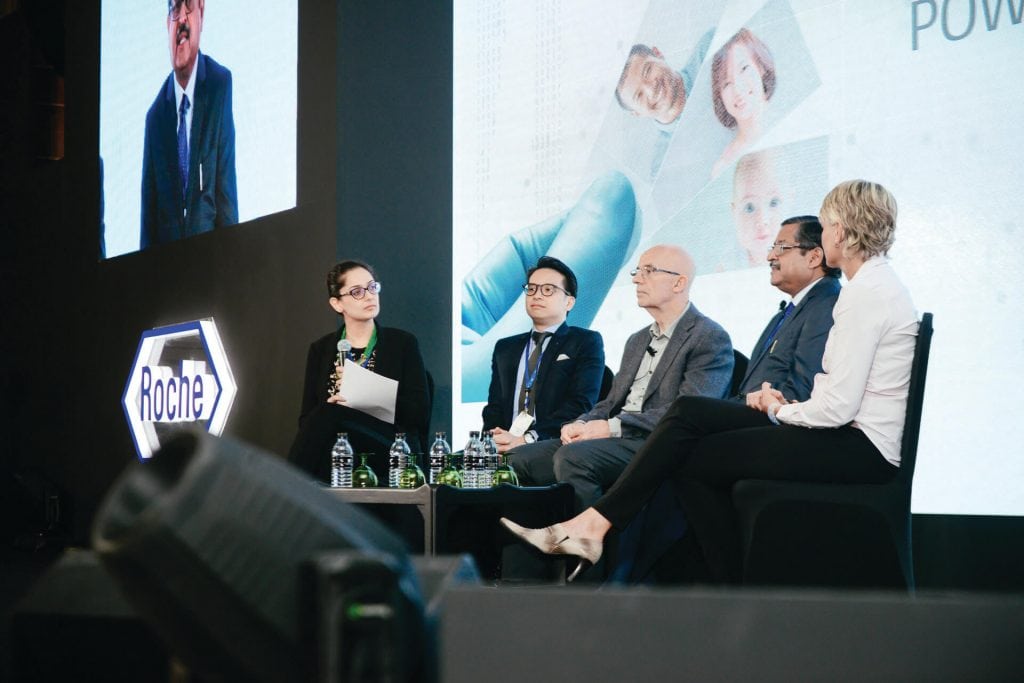
In today’s era of personalised healthcare, advances in medical devices — software solutions, artificial intelligence (AI) and consumer-facing technologies like smartphones and wearables — are playing a critical role to help predict, monitor, manage and make decisions about health. In this ever-changing landscape, Roche’s commitment to diagnostic innovation has never been more vital.
An estimated 60-70% of the world’s medical decisions are made with the support of in-vitro diagnostic (IVD) solutions.1
As a global leader in diagnostics, Roche has worked with health partners to detect diseases, determine causes, monitor patient progress and improve outcomes. Building on its core offering, digitalisation is enabling the company to provide value-based solutions to help drive more efficiencies against emerging healthcare needs.
Lance Little, Managing Director for Roche Diagnostics Asia Pacific, says digital technology is playing a significant role in democratising healthcare services by putting what was once accessible by a few, into the hands of the masses. “Digitalisation is not only changing how people perceive healthcare but is also equipping healthcare systems to address public health challenges.” Healthcare systems around the world are under increasing pressure as non-communicable, chronic diseases become more prevalent.
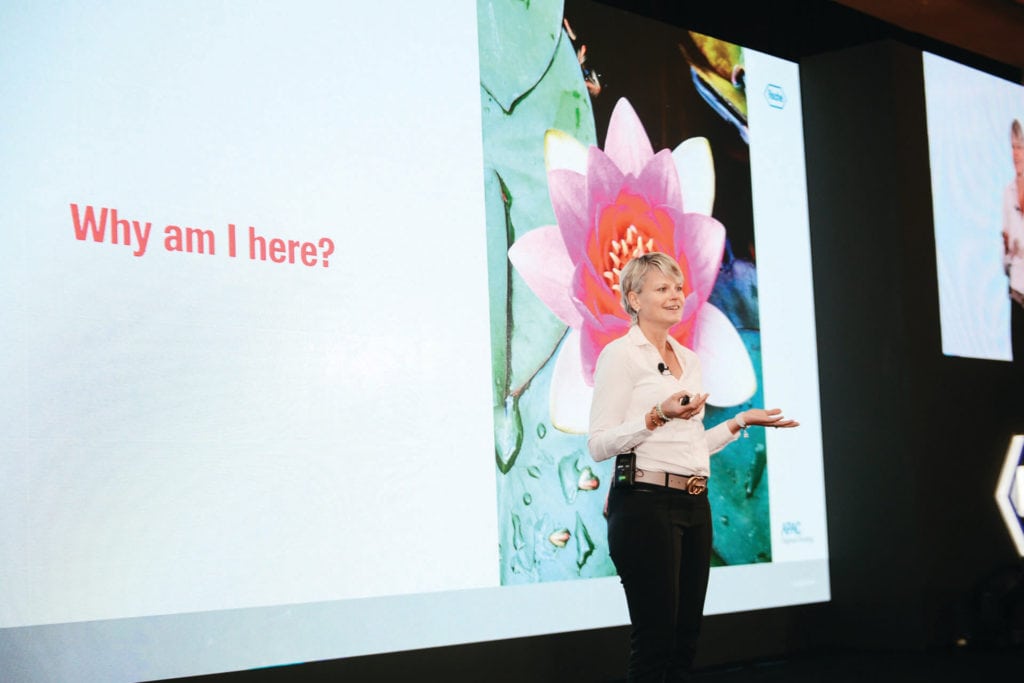
According to the 2017 Revision United Nations (UN) Report, the global population aged 60 and above is growing at a faster rate than the total population. This burden is exacerbated by under-developed healthcare infrastructure and clinical talent shortages, especially in emerging markets across Asia where methods of delivering care continue to evolve. While the need for diagnostic testing will increase, according to Mr Little, digital solutions are addressing these challenges by making processes simpler, more cost-efficient and insightful. “With the advent of digital tools, we will be able to leapfrog and get to lesser served parts of the population to enable better care,” says Mr Little.
This region accounts for half of the world population. In fact, it is a world in and of itself and the opportunities are endless. There is incredible diversity in this region — all types of healthcare systems and varying access to healthcare solutions. By being fast, cost efficient and offering high quality diagnostics, we can help healthcare systems in emerging markets make health more accessible. – Michael Heuer, the (ai) CEO of Roche Diagnostics
Solutions That Matter
Modern day healthcare extends beyond individualised diagnosis and help improve decision making processes. It’s also focusing on preventive analysis by monitoring a patient well before they are ill thereby identifying the need for early intervention. An example would be the human papillomavirus (HPV) test as first-line screening for cervical cancer. HPV is the leading cause of cervical cancer, causing more than 99% of cases2 according to the World Health Organisation (WHO). New technology helps healthcare providers diagnose women at risk for cervical cancer by individually identifying the presence of HPV genotypes 16 and 18 — the two genotypes responsible for about 70% of all cervical cancer3 – and reporting the 12 other high-risk HPV types as a combined result. Unlike a Pap smear test that focuses on abnormalities in the cells of the cervix, the HPV test detects changes before cancer has even developed by identifying the presence of the high-risk virus.
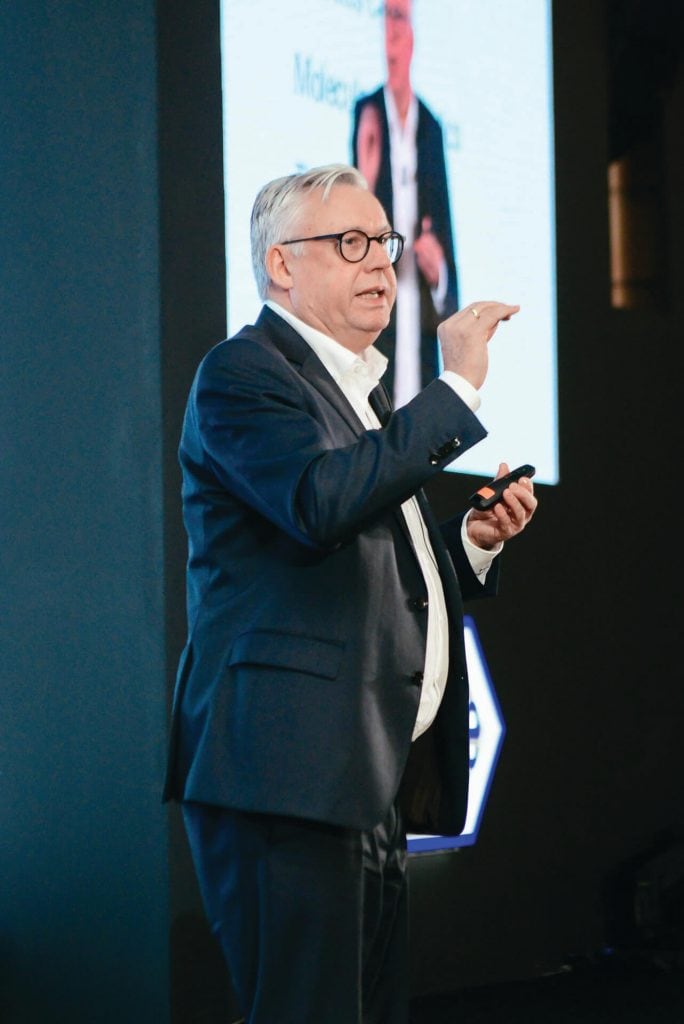
Such technological advancements in diagnostics are enabling healthcare practitioners to detect diseases early and save more lives. However, integrating digital technology into healthcare comes with significant implications that require careful balance. “Our business strategy is to ensure that we evolve in the digital world without moving away from our core business,” says Mr Little. As the industry faces growing demands from physicians seeking better tools for decision-making, hospitals asking for faster and more accurate solutions and laboratories aiming to be more efficient, Mr Little believes digitalisation can further strengthen Roche’s value-based approach.
From Insights to Value
By adopting a data-driven mindset, Roche wants to ensure that the right kind of data delivered in the right way can help institutions address key issues related to a patient’s health. Connecting the stakeholders – patient, physician, payer and healthcare provider through its digital solutions will facilitate easier communication between the parties involved. According to Silke Hoernstein, Digital Transformation Officer at Roche Diagnostics, digitalisation becomes meaningful only when companies like Roche are able to turn data into insights and create value that meets stakeholder needs.
“We take a holistic and integrated approach to our digital transformation of healthcare solutions. We want to elevate the experience of our customers and support them with data-driven insights.” Digital tools can draw from an encyclopedic knowledge of best practices and patient information by delivering insightful data when it is most useful. Solutions that can analyse complex situations, and help clinicians translate knowledge into action through diagnostic decision making tools will pave the way for the future. By reducing inefficiencies and accumulating the right data sets to help train medical algorithms, digitalisation can enhance not just an individual’s own care but everyone else’s, too.
A compelling vision for the future, Ms Hoernstein emphasises that digitalisation in the healthcare industry requires a shift in mindsets. “In the digital era, the world is turning faster than ever. While this requires us to move quickly, speed is often contradictory to perfectionism. Today, we are striving for perfectionism in our approaches but what we need to do is take risks and experiment, fail fast, and learn fast. The speed with which we act will determine our success.”
Embracing a New Vision for Sustainable Healthcare
Modern diagnostics reduces costs by diminishing subsequent health problems, reducing hospitalisation and avoiding unnecessary treatment. While the future of sustainable healthcare depends on diagnostics, the diagnostics industry has traditionally shied away from taking centre stage and showcasing the impact it has on the wider healthcare environment.
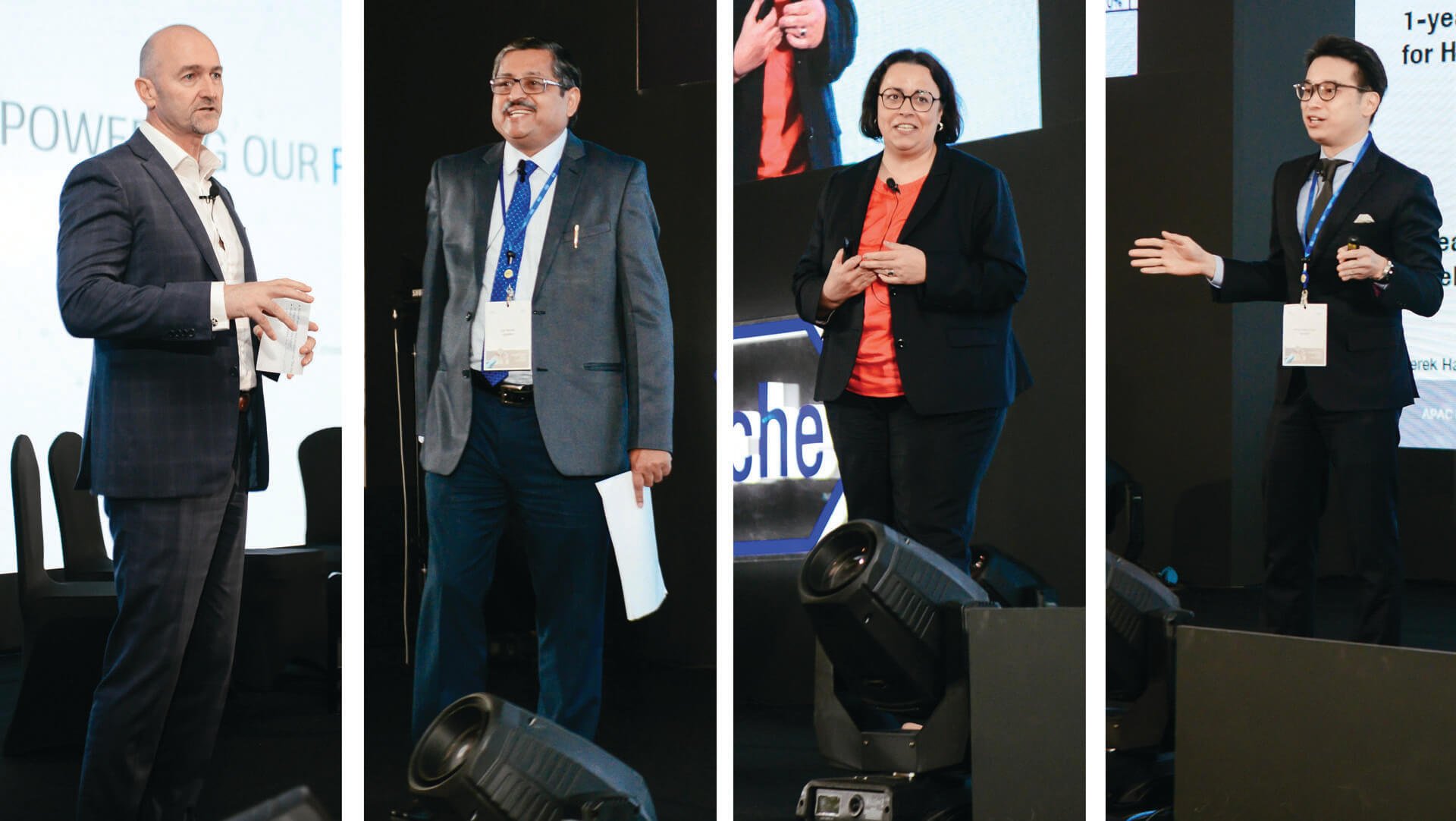
As health systems worldwide move from treatment to prevention, and from volume to value, diagnostics can accelerate this shift. However, changing the mindset of the healthcare industry calls for a greater willingness to embrace digital technology and innovation. By integrating digital technology into healthcare, the diagnostics sector has a great opportunity to place itself at the centre of healthcare delivery by improving treatment outcomes and lowering healthcare costs; utilising data to detect patterns of diseases; reducing operating costs and raising productivity to accelerate a more holistic and democratised healthcare model. This means looking beyond survival and embracing a new vision for sustainable healthcare.
The Role of Diagnostics in the Future
As with all new transformations, challenges accompany the promise. While the volume of data generated and made available to healthcare providers, patients and payers are growing rapidly, healthcare systems are struggling to turn this data explosion into meaningful information.
Don Mikkelsen, Service Manager of Laboratory Services at Middlemore Hospital in Auckland, New Zealand says there is still a long way to go in making data relevant. “Diagnostic laboratory testing is becoming more digital and more valuable. Traditionally, laboratories created atomic data — small individual data points on the samples that were being processed — but now we are seeing more intelligent interpretation of the data. One of the issues is that we produce such a huge bulk of data that healthcare providers are getting swamped.”
Laboratory testing plays a crucial role in the detection, diagnosis and treatment of diseases in patients. An estimated 60-70% of all clinical decisions from a patient’s diagnosis and treatment, hospital admission and discharge are based on laboratory test results.1 Although health records are increasingly electronic, they are often still trapped in silos. Many contain data that machines and systems cannot read and or have data that is outdated. This can lead to delays in treatment, or worse. Mr Mikkelsen says proper scaling of laboratory services is key to their growth. “Installing more advanced facilities, providing training in new skill sets, and recruiting staff that have the right knowledge and expertise can improve the approach to healthcare delivery and patient outcomes. With the transformation we see today, the role of the laboratory is no longer limited to the four walls within which it operates. Thanks to automation, digitalisation and integration powered by diagnostics, we are able to vastly expand the efficiency, scope and quality of diagnostic capabilities that we offer, thereby having a direct impact on healthcare delivery and patient outcomes.”
For Yvonne Ulrich, the Founder of Patients Are Us, access to medical diagnostic information has meant that patients have ‘more hope’ well in advance. The cancer survivor says it was not luck that found her tumour. She did. After losing a friend to breast cancer, Ms Ulrich proactively underwent genetic counselling to assess her risk. Though at the time, her risk ratio was determined as low, Ms Ulrich maintained a schedule of twice yearly breast examinations. During one of the visits, her doctors discovered a lump, later diagnosed as early stage breast cancer. “My case is just an example of how patients are no longer passive receivers of treatment but investigators of their own health.”
Access to information is changing the relationship between patients and doctors. The use of personal health data is an opportunity to adjust treatment and therapeutic strategies to move towards more personalised medicine. “There is a lot of information out there but it is not organised. By using software solutions, industry players should aggregate patient data into a platform that allows collaboration on treatment decisions and recommendations.” Ms Ulrich believes this ‘knowledge sharing’ will increase trust not just within health practitioners but also among patients and caregivers and ultimately will help us to understand how we will cure cancer.
On the other end of the spectrum, diagnostics is also changing the nature of consultations between the doctor and patient. While a typical consultation takes about ten minutes and occurs every three to six months, according to Associate Professor Mark Chan, a senior consultant cardiologist at the National University Heart Centre in Singapore, technology gives health practitioners the ability to ‘interpret and contextualise’ the huge repository of a patient’s data and precisely predict treatment outcomes for patients.
“You don’t want a healthcare practitioner running a busy clinic, with only 15 minutes or so per patient, to look through five years’ worth of data in order to determine an appropriate treatment for a patient.
As healthcare providers, we need ‘augmented intelligence’ to deliver reliable, meaningful and actionable data that help us make more rapid informed decisions at the point of care.”
People will wonder why we were making a big deal of big data. Individuals will go to physicians and know everything about themselves. Labs will look like factories where technical solutions will be executed in fully-automated ways. Validation and interpretation of results will be done by machines with experts taking care of the more complicated cases. – Michael Heuer, the (ai) CEO of Roche Diagnostics
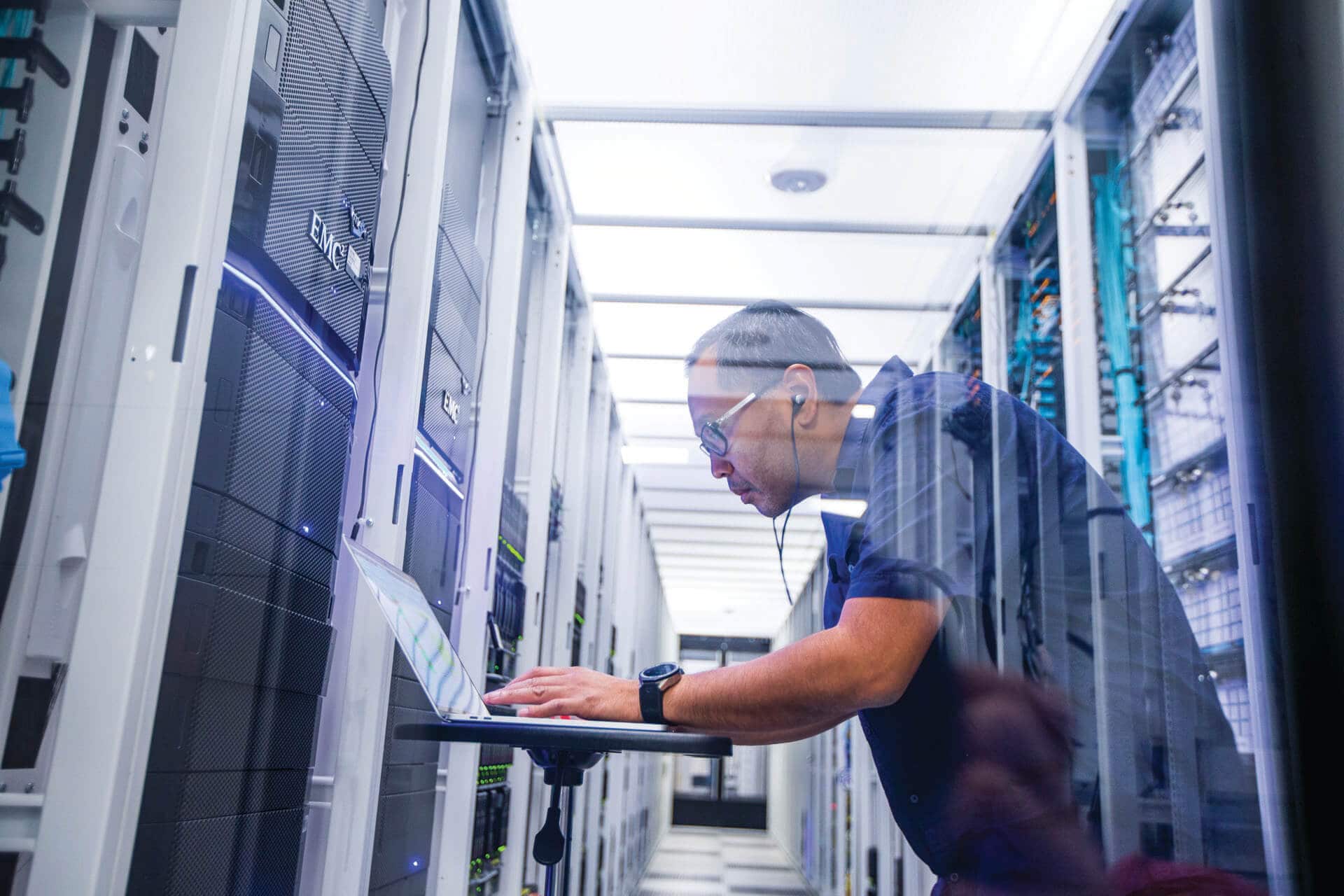
A/Prof Chan says the challenge for diagnostic companies is to make sense of big data and ensure that the machine learning tools are reliable.
A/Prof Chan also advises that despite the promise of AI, countries still need to invest in traditional registries that can serve as ‘ground truth’ to validate big data activities. In Singapore, acute myocardial infarction (AMI), more commonly known as a heart attack, is one of the four most rapidly rising causes of death. Set up by the Ministry of Health (MOH), the Singapore Myocardial Infarction Registry (SMIR) manually extracts and curates clinical data on all patients hospitalised for AMI in Singapore. Big data projects leveraging electronic health records, such as the MOH Business Research Analytics Insights Network (BRAIN), are now cross-referencing the SMIR as ‘ground truth’ to assess their reliability.
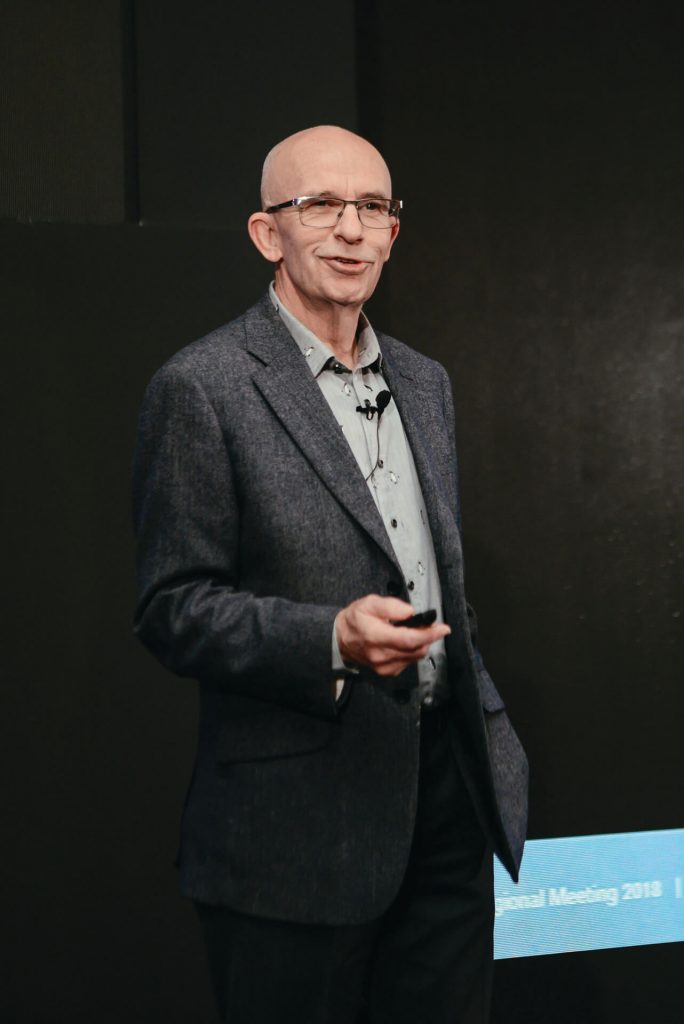
Privacy vs. Public Good
As more and more organisations aim to unlock the rivers of data and help find answers to questions about diseases and how to cure it, there is a potential risk of misuse. Regulated healthcare systems will take time to deal with concerns over accuracy, security and privacy. But will the benefits of making data more widely available outweigh such risks?
While the medical world places importance on informed consent, patients like Ms Ulrich and laboratory experts like Mr Mikkelsen believe society has got it wrong on the play-off between privacy and utility of data.
“I think we have to loosen up on access to data,” says Mr Mikkelsen. “By releasing information, you have a big chance of something good coming and others looking at it with good intent.”
According to Ms Ulrich data should be available for the greater good of people and says, “it is a joint set of information that needs to be managed and controlled.”
Ultimately, any discussion on healthcare data security and privacy comes down to one word: trust. In an ecosystem that is composed of multiple stakeholders – each has a role to play. To many in the healthcare space, digitalisation and big data is the ‘magic bullet’ we have been waiting for to sufficiently and effectively deliver solutions that will impact a patient’s health and improve outcomes. The question is, where exactly that bullet strikes.
More about the writer
Moska Najib is a former Deputy Chief of Bureau for the BBC’s South Asia office and has more than a decade’s experience in television, radio and broadcast journalism. Moska has interviewed leaders across the technology, corporate and healthcare sectors as well as policymakers on events that have shaped economic and corporate realities globally. Now as a strategic communications professional, she advises blue chips MNCs, C-Suite executives, government and government linked agencies across Asia Pacific to craft stories that create human connections.
References:
1The Worldwide Market for In Vitro Diagnostic Tests, 11th Edition. 2018. The Value of In Vitro Diagnostic Testing in Medical Practice: A Status Report.
2Wright TC Jr, Stoler MH, Sharma A, et al. 2011. Evaluation of HPV-16 and HFV-18 genotyping for the triage of women with high-risk HFV cytology negative results.
3Schiffman M, Castle PE, Jeronimo J, Rodriguez AC, Wacholder S. Lancet 2007. Human papillomavirus and cervical cancer.














